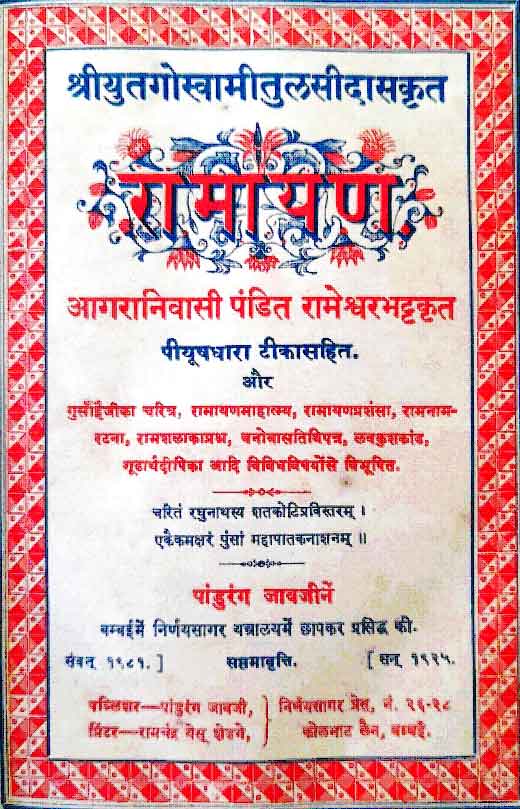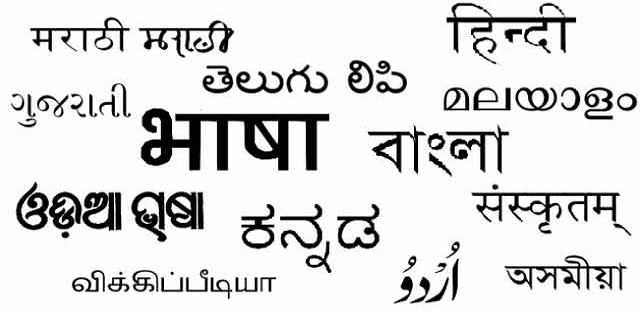
Temples and mosques – places of worship
Many Hindus believe that temples which were built in Hinduism’s holy places long before the Muslim rule period in India, were demolished by Muslim rulers, who then built mosques on the site of the demolished temples. Accordingly, there have been legal and extra-legal attempts seeking to set right ancient wrongs.
Three prominent examples are the Ayodhya Babri Masjid constructed on Sri Ramjanmabhoomi (a new Ram Lalla temple now stands in place of Babri Masjid), the Mathura Shahi Idgah mosque constructed on the Keshavdev temple at Sri Krishnajanmabhoomi, and the Varanasi Gyanvapi mosque constructed on a Shiva temple. These are centre-stage in the emerging political scenario. The latter two are the subject of ongoing litigation, while the grand-scale consecration ceremony of the Ram Lalla idol is international news.
January 2024, a defining month
Every January, we celebrate Netaji Subas Chandra Bose’s birthday and Republic Day, and mourn Mahatma Gandhi’s death anniversary.
However, in 2024, we have additionally observed the 22nd of January. On this day, our country’s chief executive, PM Modi, conducted the pran prathisthan of the idol of Ram Lalla, in the presence of thousands of invited celebrities. Lord Ram is presented to our nation as the resident deity in his birthplace of Ayodhya, within a magnificent, but as yet incomplete, temple.
Gandhi
30th January 1948 is the day when, walking to a prayer meeting within the precincts of Birla House in New Delhi, Gandhi was gunned down by a fellow Hindu named Nathuram Godse. Mortally wounded, Gandhi’s last words were “Hé Ram!”. Lord Ram was Gandhi’s preferred deity, and one of his favourite bhajans was “Raghupati Raghava Rajaram, Pateeta Paavana Sitaram”. That Gandhi’s assassin’s name also bore the name of “Ram”, is the crowning irony.
As a 6-year-old child growing up in South India, I have recollections of consternation, disbelief, shock, grief and anger, among elders, on hearing of Gandhi’s assassination.
To Gandhi, as to millions of Hindus, Lord Rama was the personification of noble conduct, a gentle, compassionate ruler. In his many writings, Gandhi wrote of “Ramrajya”, not as a political Kingdom or State, but in the religious sense of the Kingdom of God, for he was a deeply pious, devout Hindu. For Gandhi’s own peace of mind, he repeated the name of Rama (“japa”, in the Hindu tradition), whom he considered as the epitome of morality.
That fateful day in 1948, we lost a Mahatma, the epithet reportedly used in 1915 by none less than Gurudev Rabindranath Tagore – it takes a great soul to recognize another great soul. Of course, Gandhi is only the most recent Mahatma with whom Indians have been blessed. We have for example, Basava (1131-1167), and Jyotirao Phule (1827-1890), who lived centuries apart, who have also been referred to as “Mahatma”. Basava, Jyotirao Phule and Gandhi were social reformers, men of indomitable moral courage, clear-headed independent thinkers, seekers of Truth, their lives dedicated to the people of their times, who communicated with ordinary people, true and selfless leaders of people, always open to question.
Basava
Basava was a philosopher, poet and social reformer, born into a Shaiva Brahmin family in Kudalasangama, the confluence of the Krishna and Malaprabha rivers, in present-day Northern Karnataka. Even today, he is lovingly known and revered as Basavanna, a bhakt (devotee) of Lord Shiva.
Basavanna was part of the Bhakti Movement in Hinduism, which has been traced to the 7th or 8th Century in the regions of present day Kerala and Tamil Nadu. The Bhakti Movement spread to present day Karnataka and Maharashtra and then northwards. It continued into the 15th to 17th Centuries in different parts of India. The Shaiva stream remained mostly in the South, and the Vaishnava stream spread northwards. [Ref.1] The two major components of the northern stream are devotion to Lord Rama and to Lord Krishna, the people’s two favourites among the ten incarnations of Vishnu.
The bhakti towards Lord Rama and Lord Krishna among ordinary people, has been kept alive over generations, by story-telling and songs in villages and homes, of the Ramayana and Mahabharata epics, in the many languages and dialects of the people of our diverse country. Importantly, the religious and social character of the Bhakti Movement caused flowering outburst of the volume of vernacular literature and the performing arts, which is evident even to this day. The diversity of Indian languages is an asset to bhakti, which is a core value of Hinduism.
The poets, saints and philosophers of the Bhakti Movement throughout India were reformers, who used different regional languages and dialects. They were ascetics who interacted with ordinary people to inform and educate them about their felt need concerning religion. They made no caste distinctions. This removed or greatly minimised people’s reliance upon the Brahmin priesthood, who excluded women and shudra-s, and deemed that knowing Sanskrit was essential. It was also a deviation from the priesthood’s insistence on complicated ritual, temple worship and prescribed dogma, which were integral to the practice of Hinduism.
Basavanna rejected temple worship, Sanskritised rituals and ceremonial sacrifices. He denied the supremacy of Brahmins as mediaries. He practiced, taught and promoted personalized, direct, devotion to Lord Shiva, for ordinary folk in their own language. He initiated the Veera-Shaiva religious movement, taken to the people by ascetic Shaiva monks, called Jangama-s. In the Kannada language, “jangama” (noun) means “that which has life”, “that which is capable of motion”. Among Basavanna’s literary works in the Kannada language, his Vachana-sahitya, perhaps has the widest appeal.
In particular, Vachana #820 poetically speaks of personalized direct worship by the ordinary person, rather than ritualised, formalised worship inside a temple.
Vachana #820 transliterated, is: uḷḷavaru shivālaya māduvaru nānēnu mādali badavanayyā; enna kāle kambha dehavē degula shiravē honna kaḷashavayyā; kūdalasangamadevā keLayya sthavarakkaḷivunṭu jangamakaḷivilla.
In English it is: The wealthy will make temples for Shiva. What shall I, a poor man, do? My legs are the pillars of the temple, my body the shrine, my head the golden cupola. Listen, O Lord of the meeting rivers! Things standing shall fall, but the moving ever shall stay.
Basavanna sings that wealthy persons may construct temples, but being man-made, inanimate, they are impermanent, liable to collapse. Likening the human body to a temple, Basava says that the Lord resides everlasting within the heart and mind of the living devotee.
Lord Rama
Ramananda was perhaps the most important devotee of the Bhakti Movement centred on Lord Rama. He belonged to Ramanujacharya’s school of thought. He moved north and settled in Varanasi in the early 15th Century. The main cause of Ramananda’s great popularity was that he gave up Sanskrit and used the language of the people in his hymns. [Ref.1] He brought religion to people in their homes, through songs which they all could understand, thus releasing them from ritual and formalised temple-based worship.
Goswami Tulsidas (1532-1623) is a devotional descendant of Ramananda. His Ramcharitmanas in the Awadhi dialect, is a favourite of millions of ordinary people in northern India. He preached the religion of devotion to Rama in local languages, making Rama the preferred deity of millions of ordinary people. [This writer has his mother’s personal copy of Ramcharitmanas published in 1925, annotated in contemporary Hindi by Pandit Rameshwar Bhat of Agra – picture BELOW]. Tulsidas emphasised bhakti as the doctrine of devotion to Lord Ram as personal deity. It is far removed from ritualised worship in temples, and similar to Basavanna’s teachings.
End thoughts
Following the pran pratishthan ceremonies on 22nd January 2024, PM Modi is reported as saying: “Our Ram Lalla will no longer live in a tent but will reside in the magnificent temple”. [Ref.2] This brings to mind, the last line of Basavanna’s Vachana #820 referring to the figurative impermanence of temples built by the wealthy, that “Things standing shall fall …”.
Collapse of a place of worship due to any cause – deliberate destruction, natural events like earthquake, disuse deterioration, mega-project effects, legal action, etc. – does not lead to collapse of the faith or the religion. The religion remains in the hearts and minds of the people who bear and practice that particular faith, and not in the destructible inanimate objects even though figuratively imbued with life (prāna) according to accepted religious ritual and ceremony, and widely considered as holy.
A Muslim ruler destroying the temple at Sri Ramjanmabhoomi and constructing the Babri Masjid over it centuries ago, did not destroy people’s faith in Lord Rama. Likewise, demolishing Babri Masjid in 1992, and constructing a Ram Lalla temple at its site, has not destroyed Muslim faith in Allah.
Hinduism is sanātana (eternal) because it is foundationally spiritual, and is not primarily based on temple or idol, although worship in temples is undeniably an accepted, integral part of Hinduism.
Every religion has its holy places, to which individuals or groups of the faith go to worship – temple, mosque, church, gurudwara, etc. – in accordance with their respective practices.
Basavanna’s “Things standing shall fall …“, pertains to the impermanence of temples built by persons with economic means, but it applies equally to mosque, church or any other place of worship. It is reality that grandiose places of worship overshadow the essence of faith, diverting from the fundamental spirituality of the faith to the ritual and dogma of the religion.
The dynamism of the saints and poets of the Bhakti Movement has kept Hinduism alive and indestructible among common people across the length and breadth of India, over the centuries. Again Basavanna comes to mind: “… the moving ever shall stay”. Genuine bhakti for Lord Rama handed down in living languages over generations, will certainly continue to live in the hearts and minds of people.
The religious devotion of ordinary people, will always triumph over the motivated religiosity of the self-seeking wealthy and powerful. Hinduism in the hearts and minds of ordinary people, is not under threat, so long as humans live.
S.G.Vombatkere retired in 1996 from service in the Indian Army, in the rank of Major General.
CONTACT DETAILS: Email: <[email protected]>
References
1. D.S.Sarma; “Hinduism Through the Ages”, Chapter VIII ‘The Age of the Later Bhakti Schools’; Bharatiya Vidya Bhavan, Sixth Edition, 2000.
2. “Ayodhya Ram Temple: PM Modi says ‘Ram Lalla will no longer live in a tent’“; <https://www.cnbctv18.com/india/ayodhya-ram-temple-pm-modi-says-ram-lalla-will-no-longer-live-in-a-tent-18862421.htm>; CNBCTV18.com; Jan 22, 2024 6:13:42 PM IST.













































